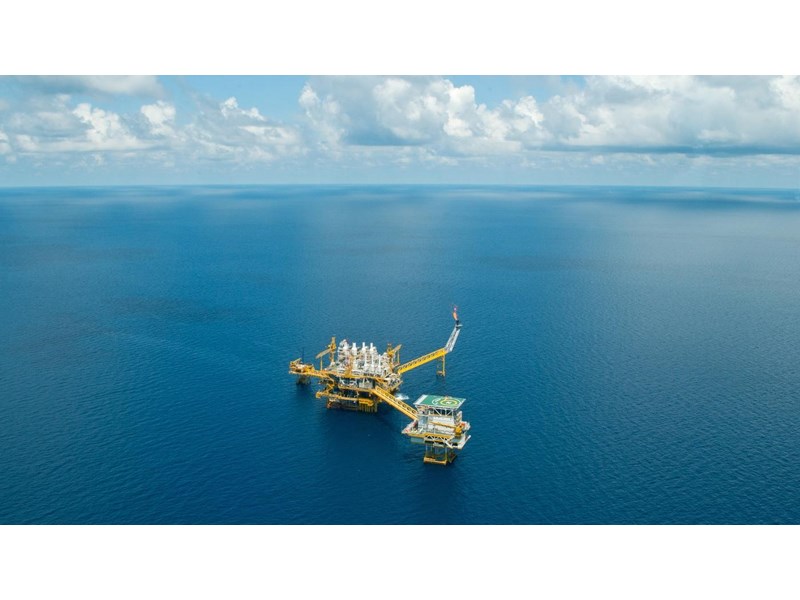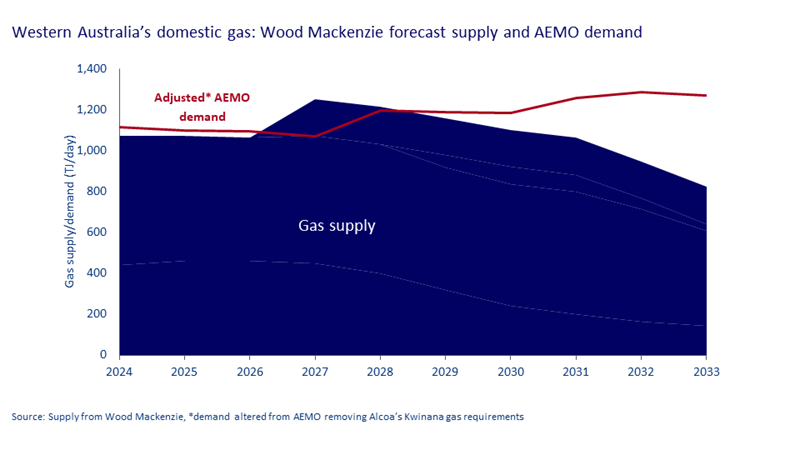Market outlook - opportunities for West Coast gas
In the latest of our Australia Upstream insights, our focus shifts to the West Coast gas landscape, investigating the market outlook, as well as the opportunities and blockers it presents
2 minute read
Anne Forbes
Senior Research Analyst, Upstream

Anne Forbes
Senior Research Analyst, Upstream
Anne focuses on upstream assets updates at the intersection of our upstream and geology research
Latest articles by Anne
-
Opinion
A two-decade decline in exploration is driving the need for carbon neutral investment in Australia’s upstream sector
-
Opinion
Market outlook - opportunities for West Coast gas
-
Opinion
Can Australia create energy super basins?
A lot has changed in Western Australia’s domestic gas balance. Gas demand has been outstripping supply, stored supplies are being drawn down and unsurprisingly, prices are rising. The once well-supplied market is now tight and more volatility is expected until new supply comes online later in the decade.
But that new supply won’t be enough. With a long-term shortage on the horizon, we consider if exports from the onshore Perth Basin could, counterintuitively, help to resolve domestic supply shortages. For this to happen regulatory change is required, and we’re already seeing the state government’s hardline rhetoric on banning exports from the Perth Basin softening, as it reviews its current position. This all spells opportunity for those who have – or can find – gas and swiftly bring it to market.
This piece is the fourth in a series of short publicly available editorial analyses on opportunities in the Australian upstream market. The first was on the current state of the M&A market, with follow-up pieces on the East Coast market and the Beetaloo sub-basin.
The background analysis for this short piece comes from a far longer and more comprehensive Wood Mackenzie deep dive into the dynamics of the Western Australian gas market, available here. It analyses current and future trends in both WA gas supply and demand, the impact of the energy transition, new exploration opportunities and the constantly shifting Perth Basin narrative, plus an assessment of the possible market impact of further changes to gas export rules.
The gas market in Western Australia
Western Australia’s domestic gas market is entirely separate from the Eastern states with no connecting infrastructure. The largest customers are mining and mineral processing. Gas and renewables are forecast to edge out coal-fired generation in Western Australia by the early 2030s. As a result demand for gas-fired power generation is forecast to increase significantly.
Retiring demand, developing supply
But the landscape is evolving rapidly for both demand and supply. The region’s single largest consumer, Alcoa, has announced it will close its Kwinana bauxite processing plant by the end of 2025. The closure will give the market some breathing space, but it’s not a permanent solution to an emerging long-term supply issue that arises in the 2030s.
The supply mix is also changing as traditional sources of supply mature. In the near-term there is no certainty that developments like Scarborough and new fields in the Perth Basin can be developed quick enough to close the gap.
And industry’s assessment of the potential of the Perth Basin keeps changing. A revival of activity since the 2014 Waitsia discovery led to a series of exciting discoveries, but recent dry appraisal and development wells has revealed the basin is much more complex than originally thought. Current operator’s plans for development now seem ambitious and delays are likely.
The future: risks and opportunities
Many of the issues raised above are currently being reviewed by the Western Australian state government, as it looks to create policies that can support new developments and customers’ demands for cheap gas, while also considering appeals for exportation. Getting that balance right, and thereby reducing the risk of further price volatility, will not be easy. Nonetheless, gas demand is set to grow, and many opportunities exist for new players to potentially meet that need.
Receive expert perspectives on Australia's upstream sector - straight to your inbox.
Complete the form at the top of the page and be the first to receive the latest insights from our research experts.

Australia & Oceania independent upstream solutions
Find out more about how we are helping the exploration and production sector in Australia and Oceania navigate current upstream challenges and opportunities.
Find out more






